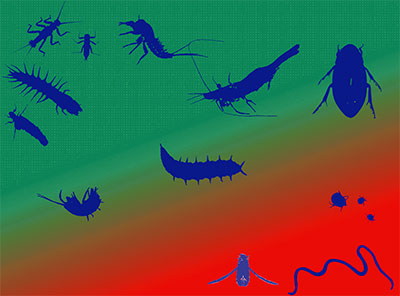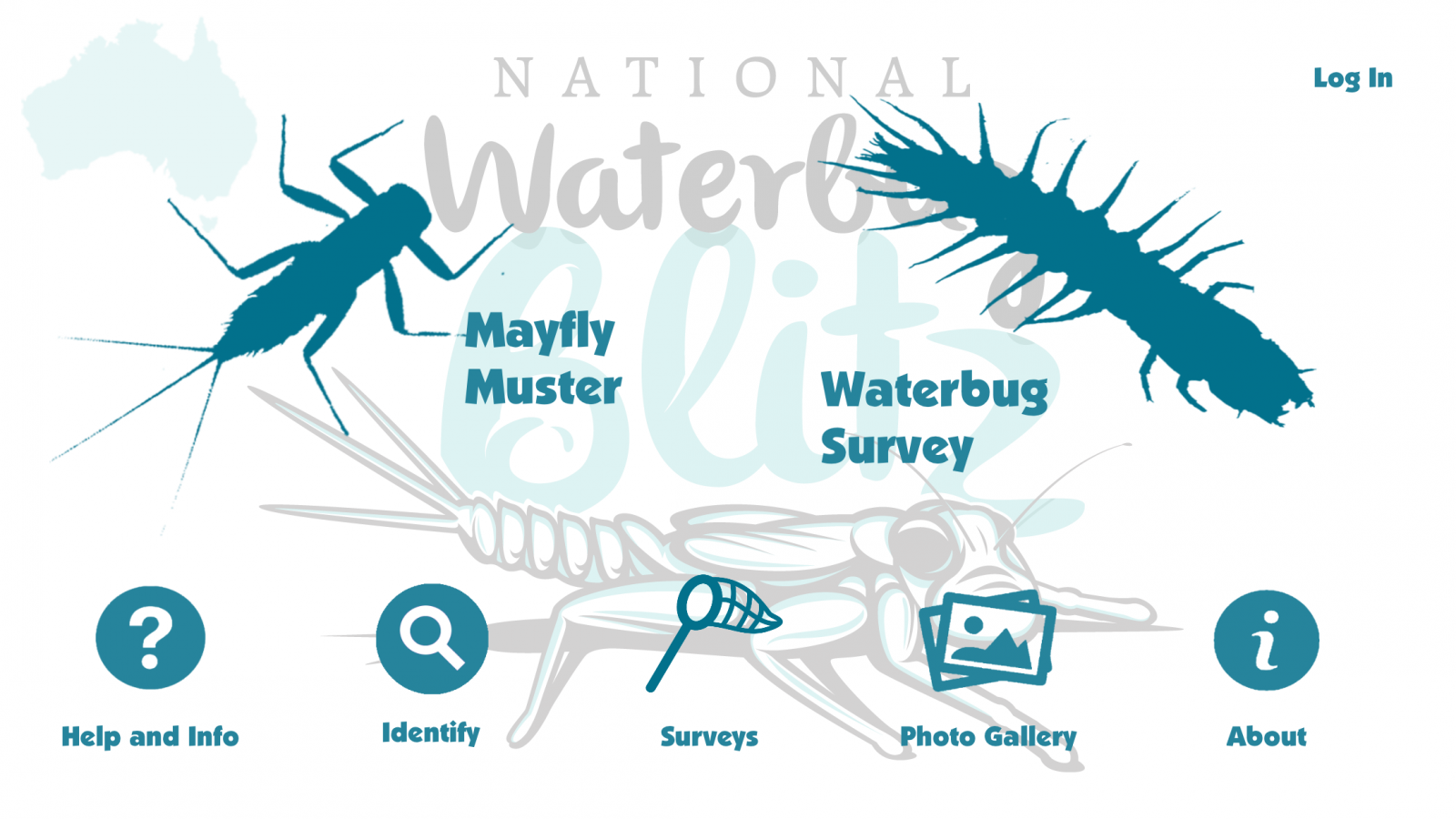How we use waterbugs to assess waterways
Different waterbugs can tolerate different amounts (and also different types) of impact. The picture below roughly illustrates some of these patterns. Worms (lower right) tolerating fairly heavy pollution and low oxygen levels, while toebiters, stoneflies and mayflies (upper left) tend to need nice places to live and lots of oxygen.

Waterbugs have been the subject of scientific study for quite a long time and we are at a stage where we can look at the collection of waterbugs you find at a site, and imply the health or condition of the waterway where you found them.
One of the simplest ways to do this involves calculating a SIGNAL score for the site, using the average of the SIGNAL grades of each of the waterbugs you find there.
The example below calculates SIGNAL scores (SIGNALT) for a site, by simply averaging the grades of each of the waterbugs.
| Waterbugs (ALT) | SIGNALT grades |
| blond sprawler | 8 |
| gripops | 7 |
| Atalophlebia | 7 |
| caenids | 5 |
| glass shrimp | 4 |
| chironomids | 4 |
| worms | 2 |
| Physa acuta | 2 |
| | |
| SIGNALT SCORE | 4.875 |
| Number of Taxa | 8 |
SIGNAL scores can be calculated for sites using waterbugs that have been identified in several different ways. The example above uses Agreed Level Taxonomy (as good an identification as you can make with a live animal, and a magnifying glass). If you have limited time you can identify the waterbugs more simply, (Order level identifications). These are the equivalent of picking your stoneflies from your mayflies and your midges. You can calculate SIGNAL scores with this data too, but it tends to be a bit rougher. A weighted SIGNAL score can also be calculated, and this takes into account the fact that some waterbugs are more numerous in a sample than others, and "weights" them accordingly.
 All of the SIGNAL calculations used in The National Waterbug Blitz are either SIGNAL 2, or a modified form of it that works for Agreed Level Taxonomy called SIGNALT.
All of the SIGNAL calculations used in The National Waterbug Blitz are either SIGNAL 2, or a modified form of it that works for Agreed Level Taxonomy called SIGNALT.
The formal scientific paper describing how SIGNAL2 was developed (Chessman, 2003) can be found here.
If you use the app, or your data ends up in the data portal, all these calculations are made automatically, so you can concentrate on enjoying and identifying the waterbugs!